Finished another sorting job last night, 1,600+ images, and so another load of sorting finds, pics that weren’t featured at the time that they were taken, is now awaiting our attention. We’ll do these in chronological order.
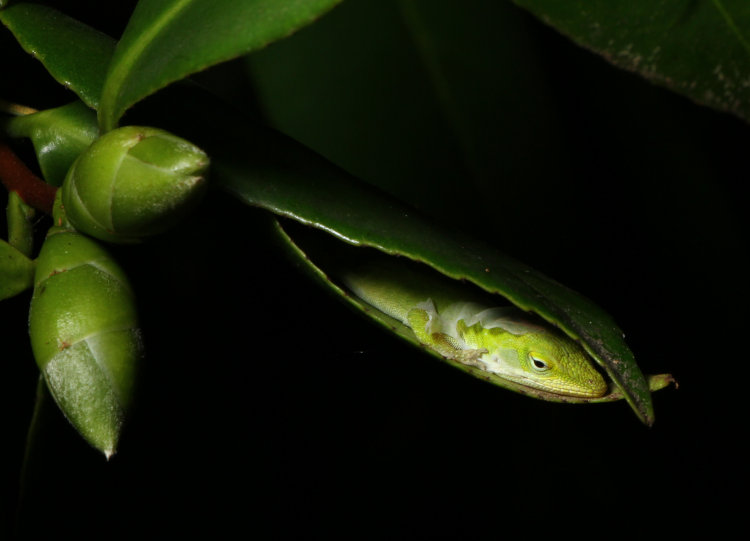
The camellia trees/bushes/whatevers, for some reason, aren’t as popular sleeping spots for the Carolina anoles (Anolis carolinensis) as the Japanese maples, even though the anoles can frequently be found hunting on the camellias during the day. There was one notable exception, a half-size anole that liked one particular branch of a camellia near my office door, and on this occasion it was actually in the middle of molting, shedding its skin in the tattered rags manner that they do. I hadn’t realized this in the headlamp, but the flash revealed it. Roughly half the time, the anoles either hear me approaching or take note of the headlamp and so are awake for my shenanigans, but rarely even twitch – they just remain alert in case it’s needed.
The property plays host to this particular plant, which is kind of cool looking.
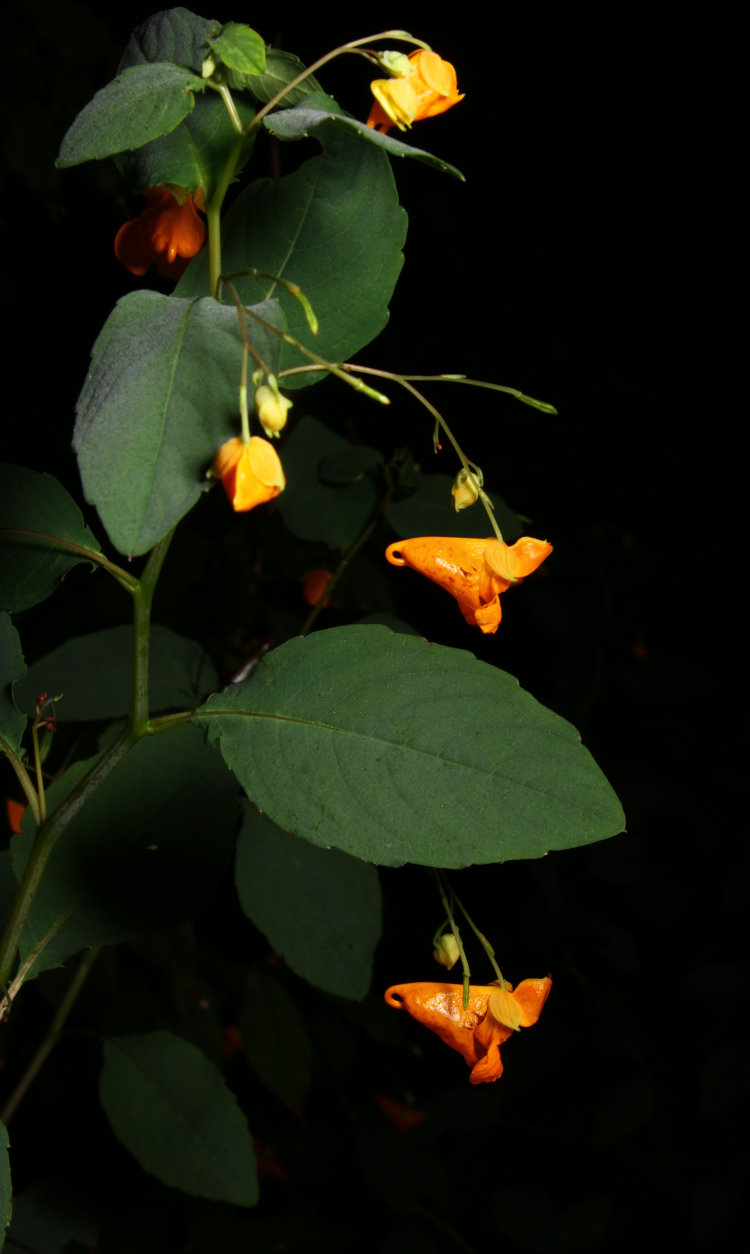
These are orange jewelweed (Impatiens capensis,) and they tend to bloom in late fall, as well as being a sparse vine, so they remain unnoticed until the blooming season. These appear almost entirely within The Puddle, the small overgrown pond in the middle of the backyard that, throughout the summer, might be a little marshy but only resembles a hollow filled with trees and vines and reeds; it looks more like a very small pond in the winter when much of the foliage has died off (and, reportedly, there is an old fountain buried in there, though we have yet to expose it.)
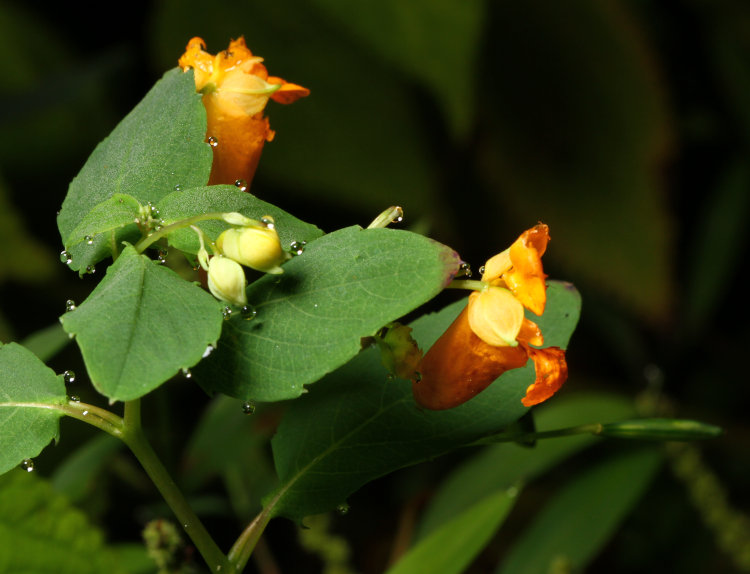
Orange jewelweed is also one of the plants that appear to exude excess moisture from certain parts of the leaves, and don’t ask me what this is about, but at times it adds a little charm.
The nutria are semi-regular visitors for the corn that we throw down, and I caught one during their chronic scratching sessions.
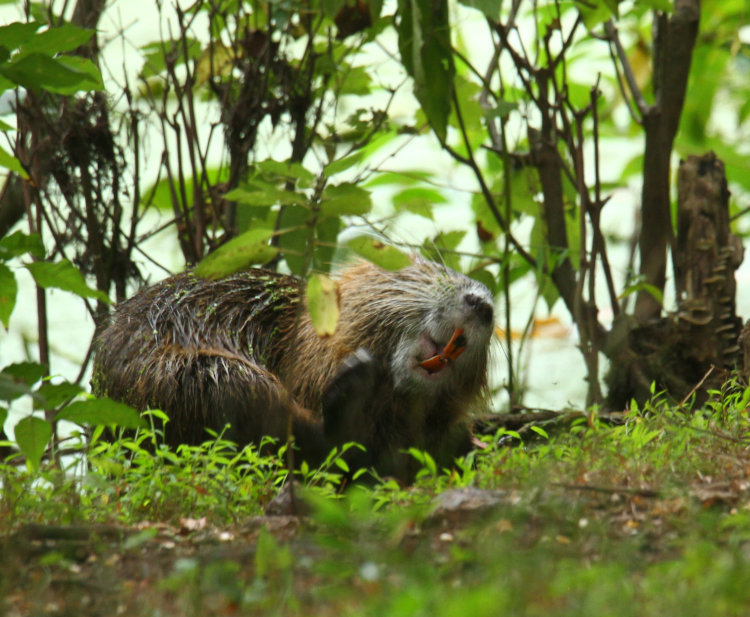
We’ve never seen anything scratch as much as nutria do, which is why we labeled the mated (we think) pair that visits, ‘Itchy’ and ‘Scratchy.’ We can’t tell them apart, so the first one to appear is always considered Itchy for convenience, and since they only occasionally show up together, it kind of makes us think Scratchy is a rare visitor, even though they could simply be alternating appearances.
Just a few minutes later, this one swam off but was spotted up at the upper end of the pond; we rarely ever seen anything up there, but the tattered condition of the duckweed, with the occasional trail cutting through it, tells us that somebody is going up there regularly, probably at night. It could be the nutria, it could be the beavers, it could even be muskrats – we’ve seen them all. But this time, it was definitely Itchy. Unless it was Scratchy.
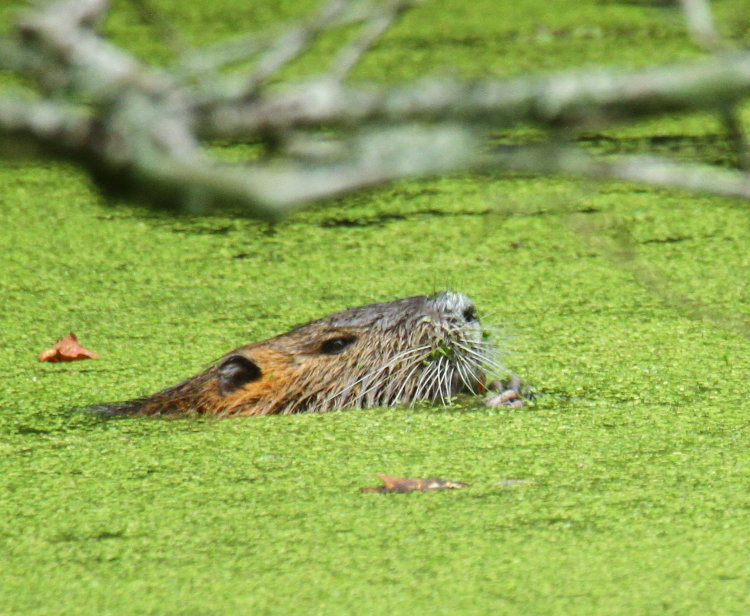
I was shooing freehand with the long lens, which is absolutely not the time to be shooting video, but I wish I had been, since this one appeared to be shoveling double-handfuls of duckweed into its mouth as it swam. Not terribly surprising, since they’re herbivorous, but it was an action that I haven’t seen and seems slightly odd (and a bit uncouth.) This is of course a tight crop and suffers from that a little, but you can still make out both forepaws visible in front of the snout.
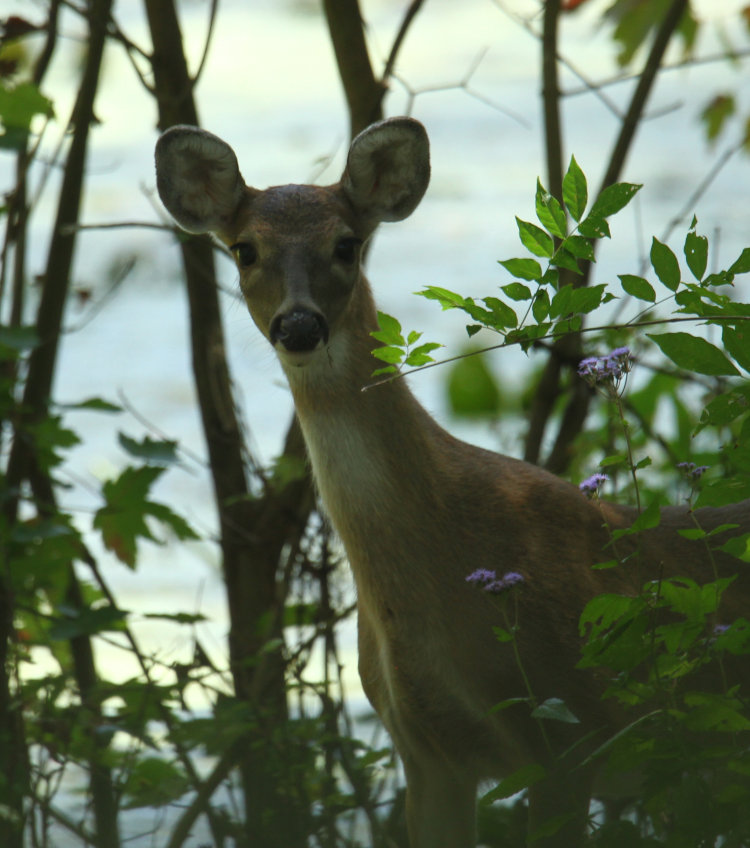
We have several white-tailed deer (Odocoileus virginianus) that are semi-regular visitors, also after the corn, but they don’t come as frequently as expected. Still, there are the orphaned ‘Pirate Twins,’ and a doe with her single fawn, all almost full adult size now. And one other, but since we’re doing this in chronological order it’ll have to wait. This was one of the twins I believe, for once captured while I was in the lawn rather than from the deck or upstairs bathroom, and it’s waiting to see if I’m going to pose a threat. It looks overcast or late, but it’s just under the deep canopy, because a minute later I also got this:
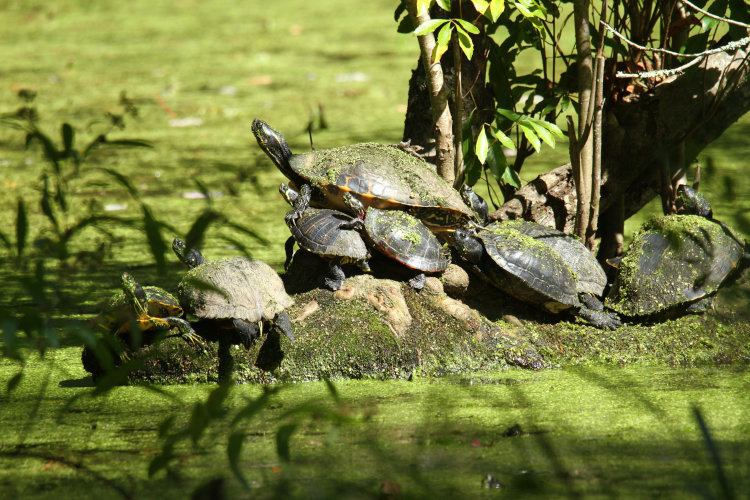
As the overnight temperatures dropped at the beginning of this month, the turtles suddenly reappeared in their usual spots on Turtle Island when the sun was available, and while this is a nice pile, it’s a far cry from the record (so far.) These are all yellow-bellied sliders (Trachemys scripta scripta) and eastern painted turtles (Chrysemys picta picta) – in fact, there’s only one painted that I’m sure of, the little guy right there in the center with the red markings, but a couple others might be present.
Now for one curiosity that I didn’t post at the time.
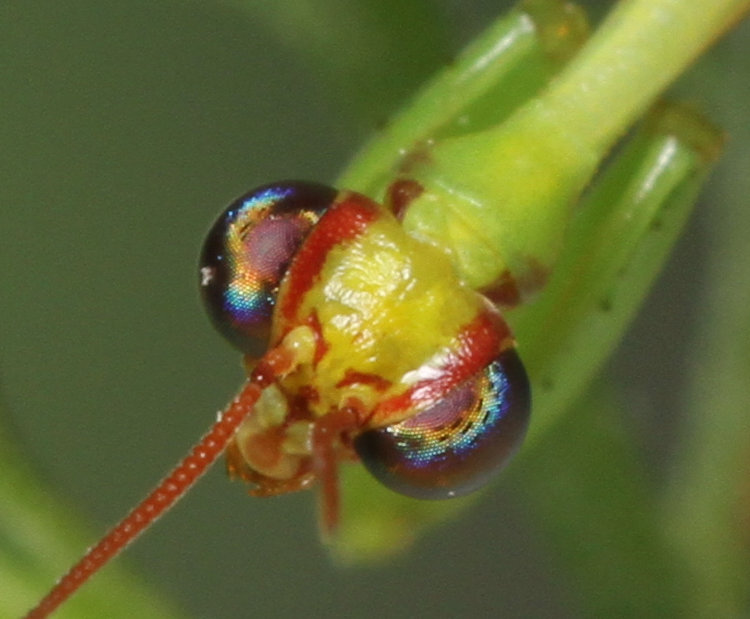
Back when I was doing the detail shots of the green mantidfly, I got a couple of frames that showed these strange ‘dashes’ in the rainbow diffraction effect from the compound eyes. Now, dark spots from compound eyes are common, usually called ‘false pupils’ and likely resulting from a visual path straight down the tubes of the ommatidia – the colors all come from the reflective interior sides of these deep tubes and so vanish when you have a direct view. But this is an exceptionally weird pattern for false pupils; I’ve seen them as a singular spot of course (mantids,) and a pattern of multiples for things like butterflies and cicadas and ambush bugs, but never a set of well-defined crescents. Does this come from shooting straight down from above the head? I have no idea, but it shows up well within the diffractive pattern at least.
Okay, so now we return to the deer.
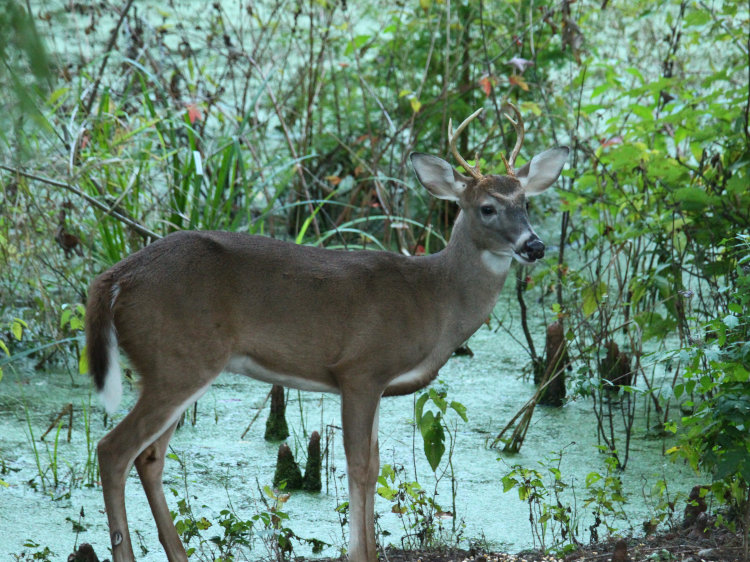
The distinctive thing about this one is that it’s a buck, which have been exceedingly rare, especially considering how many does and fawns we’ve seen. This is only the second in the main part of the backyard, though another was spotted in the distance on the far side at the edge of The Bayou, and I have a skull from a looked-to-be-complete skeleton in that immediate area – that’s been it, much unlike the old place where they would often congregate. This was actually dusk, and the light register shows it, so I also tweaked it to demonstrate the difference.
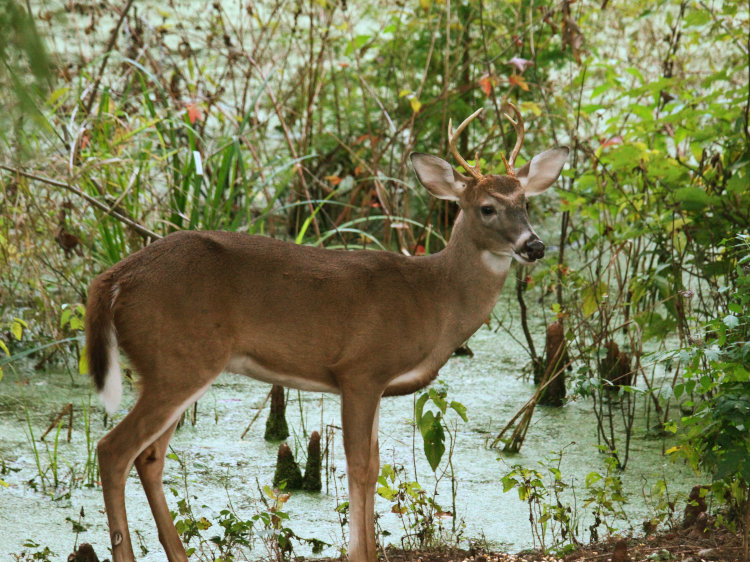
It would take far too much work to look like full sunlight, but at least this shows how blue the light goes at these times, or under deep canopy; red and yellow get absorbed quickly, but blue scatters a lot, so outside of direct light the tones change significantly.
So that clears a few more out, plus it adds to the image uploads for October – which aren’t done yet. In fact, I’m going to go out right now and see about adding a few more on top of what’s already planned (it’s about 1:50 AM on a very misty night.) Stay tuned.



















































